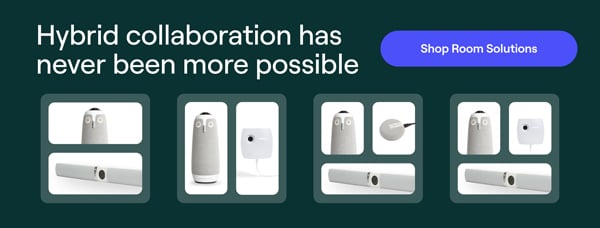The global shift towards a digital ecosystem of products and services has brought many changes to the ways we work, meet, and collaborate. One of these is the surge in popularity of webinars. But what exactly is a webinar? And when are they actually useful? Let’s take a closer look.
What is a webinar?
A webinar is more than a simple virtual meeting, it’s a virtual event. The world itself is an amalgamation of the word “web” and “seminar”, which alludes to their educational nature. A webinar is usually led by a host or a panel of experts who are tasked with sharing their expert knowledge on a particular subject. Every webinar includes an online audience, who are often invited to interact with the presenters either through a Q&A session or via chat. The interactive component of webinars is one of the factors that make them so popular in hybrid work environments, and so effective as educational tools.
What are the types of webinars?
There are many different types of webinars, which is why it’s so important to have a clear goal in mind before hosting one. The most common types of webinars include:
- Educational seminars
- Training
- Product launches
- Demos
- Q & A’s
- Leadership panels
- Onboarding sessions
What are the primary benefits of webinars?
Unlimited audience size
With a webinar, your audience isn’t limited by the number of people you can fit in your meeting room. Even better, your audience does not have to be in the same room together. This allows your webinar audiences to include people from all over the world. The only limitation on a webinar audience is your ability to get registrations.
Live and recorded
While webinars can facilitate live collaboration, they can also be recorded which allows interested parties to view them whenever they need. This is a great way to create and save training courses, onboarding, or even product demos.
Generating new leads
Webinars are incredibly effective vehicles for generating new leads for your sales team. Not only do webinars provide an engaging platform for your sales team to give demos from, but by asking attendees to register beforehand you can gather all the information you need to integrate them into your sales funnel as a new lead.
Tips for running a successful webinar
Pick the right topic
Take the time to consider the purpose of your webinar, and select a topic that resonates with your target audience. You can have the ideal webinar setup from a technical perspective, but you won’t have a successful webinar without quality content.
Pick the right date
Since webinars are live events, selecting a date and time that works for your target audience is critical for success. We suggest picking a date far enough in advance that your audience has time to reserve time on their calendars, and you have time to spread the word through social and email campaigns.
Pick the ideal leader
The interactive nature of webinars makes choosing the right webinar presenter, moderator, or panel essential. A good leader will engage the audience while efficiently moving through the webinar agenda. Depending on the type of webinar you’re hosting, the moderator or panel members can serve as incentives for people to register and attend.
Consider your environment
Make sure your presenter has a quality camera, microphone, and lighting. Since the audience will all be watching the presenter’s screen, it’s incredibly important that care is put into making sure the presenter can be clearly seen and heard. Few things can derail a webinar as quickly as a presenter that no one can properly see or understand.
Follow up
Since webinars are driven by registrations, it’s easy to collect the email addresses of everyone who attends. Use those emails to follow up with attendees after the webinar is over. This is a great opportunity to summarize key takeaways, encourage follow-up, and even include a recording of the webinar for people who registered but ended up not being able to attend.
Webinars are dynamic tools that enhance the way we share knowledge and connect, particularly amongst hybrid and remote participants. A good webinar requires careful planning, a compelling topic, and charismatic presenters. Their digital nature empowers organizations to cultivate audiences from around the world, and the option to record them ensures that valuable content remains accessible in the future.
%20(1).png)
Better meetings start here
From huddle rooms to boardrooms and everything in between, we’ve got you covered with solutions that take teamwork to the next level.
Shop Solutions